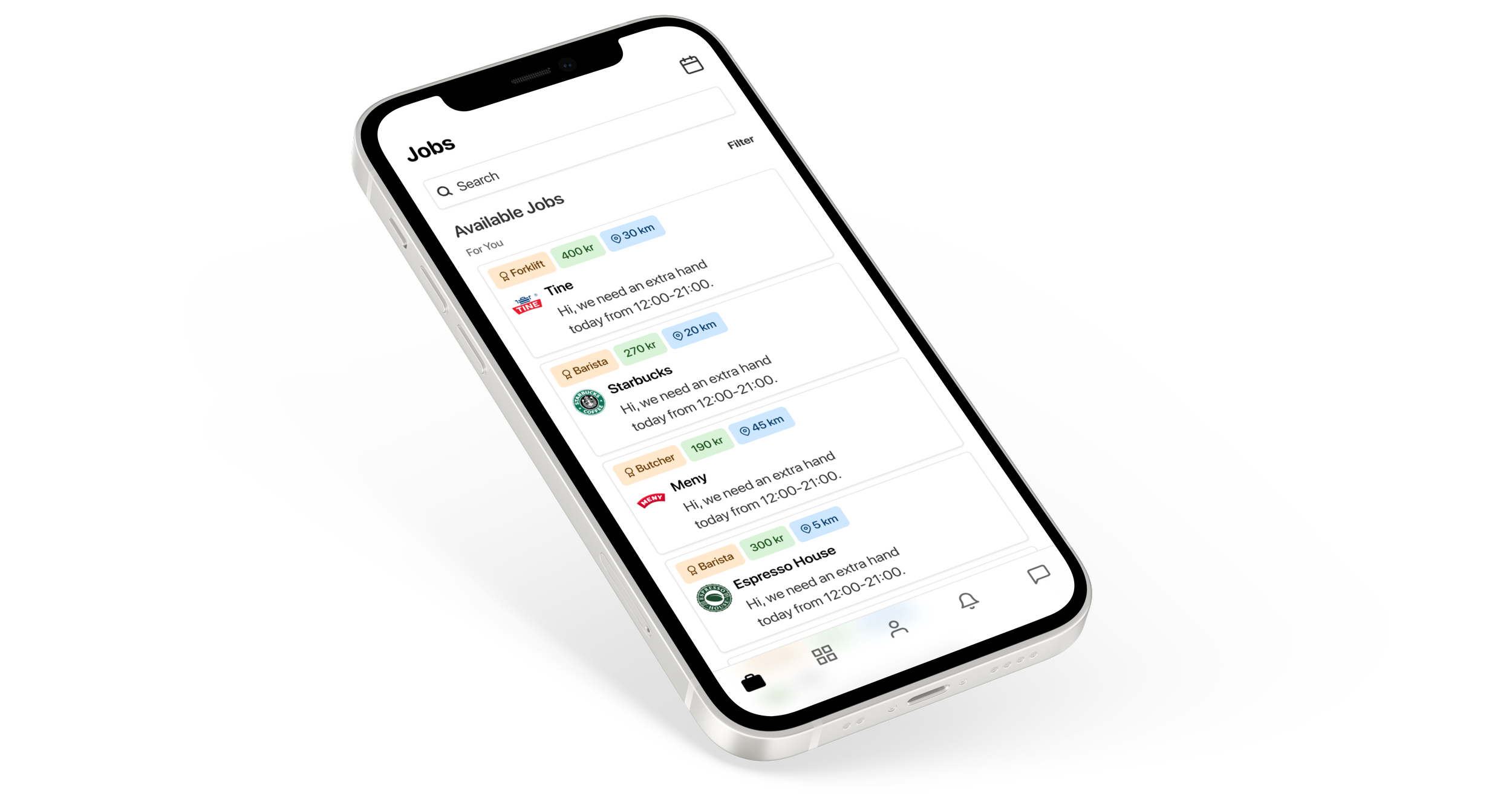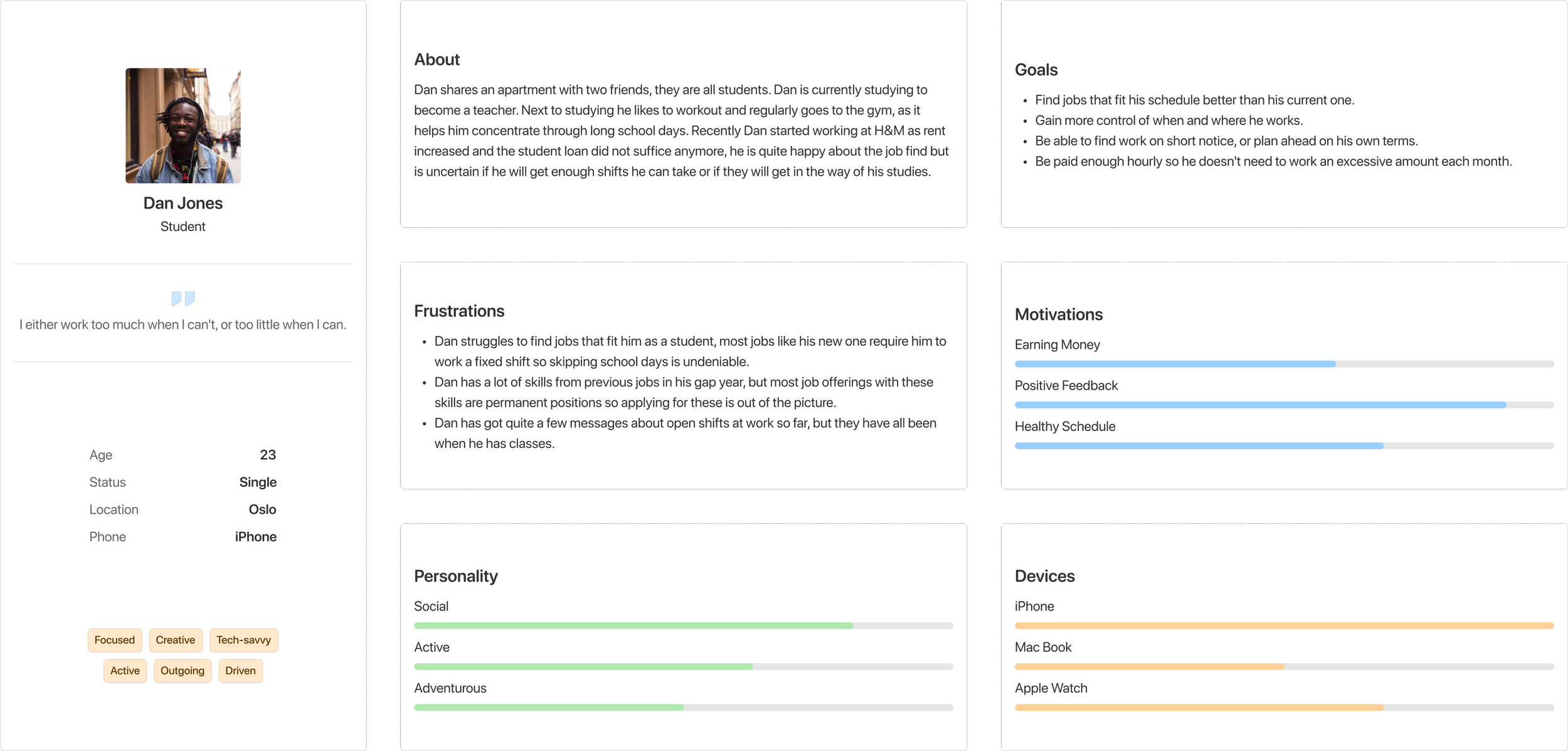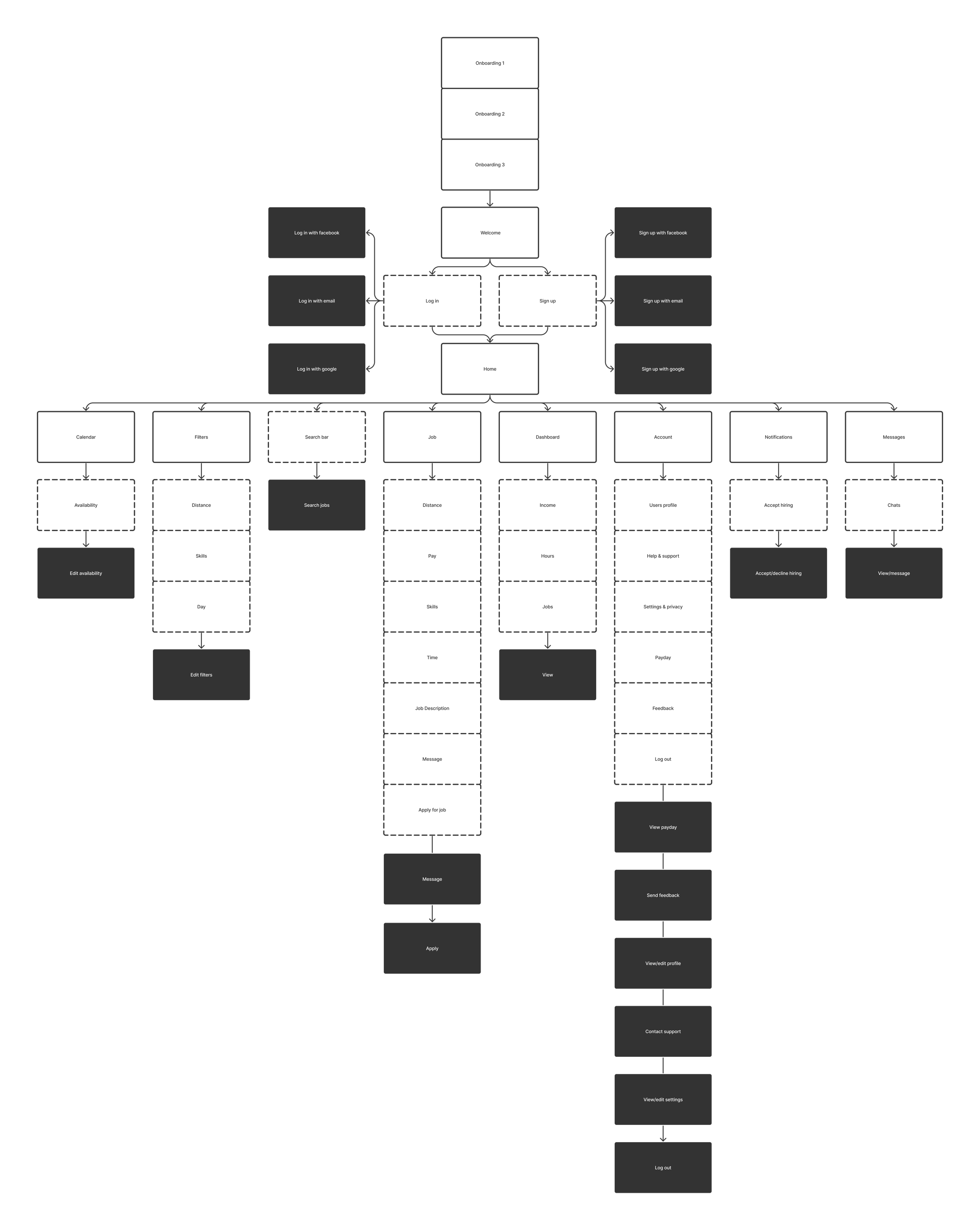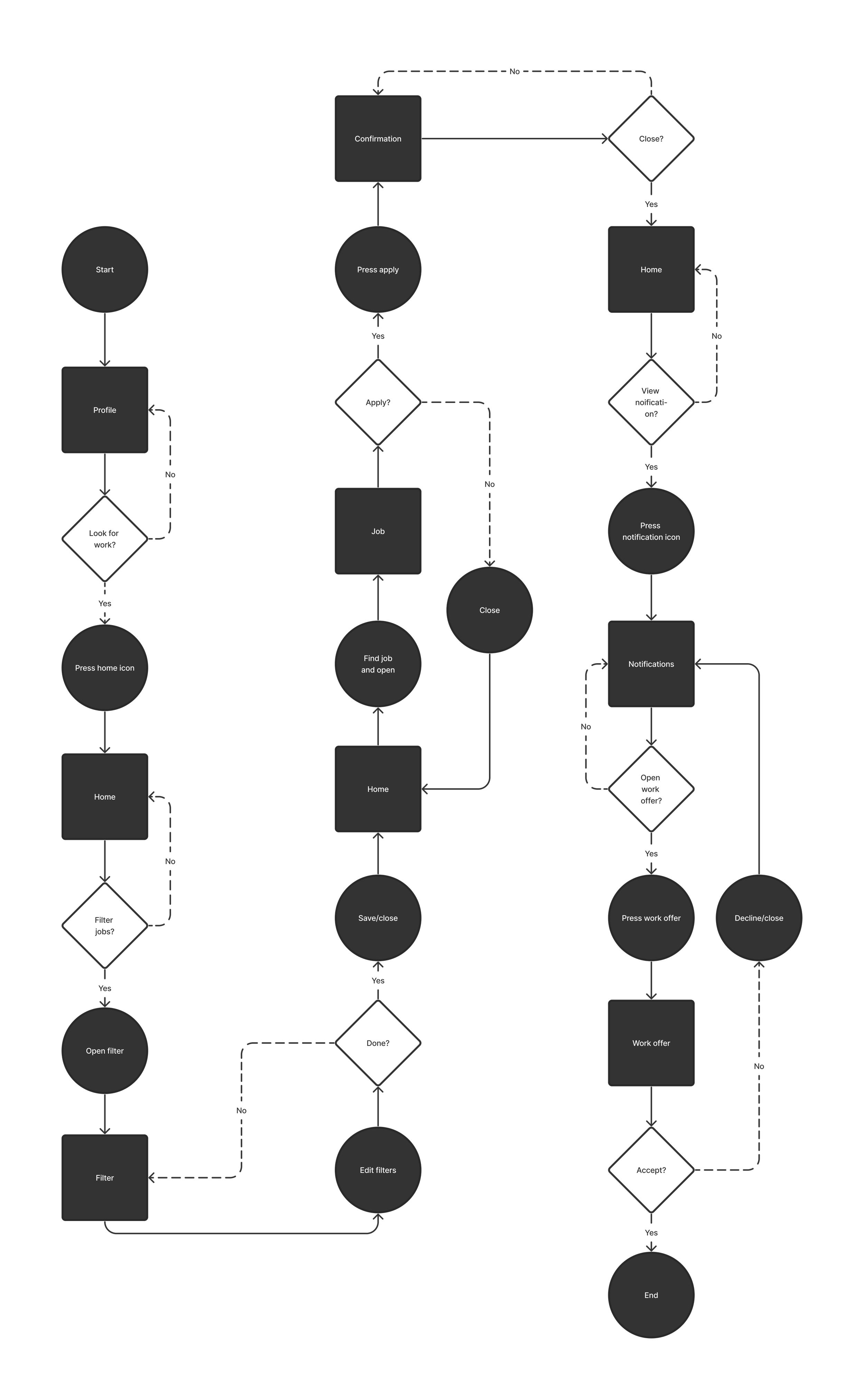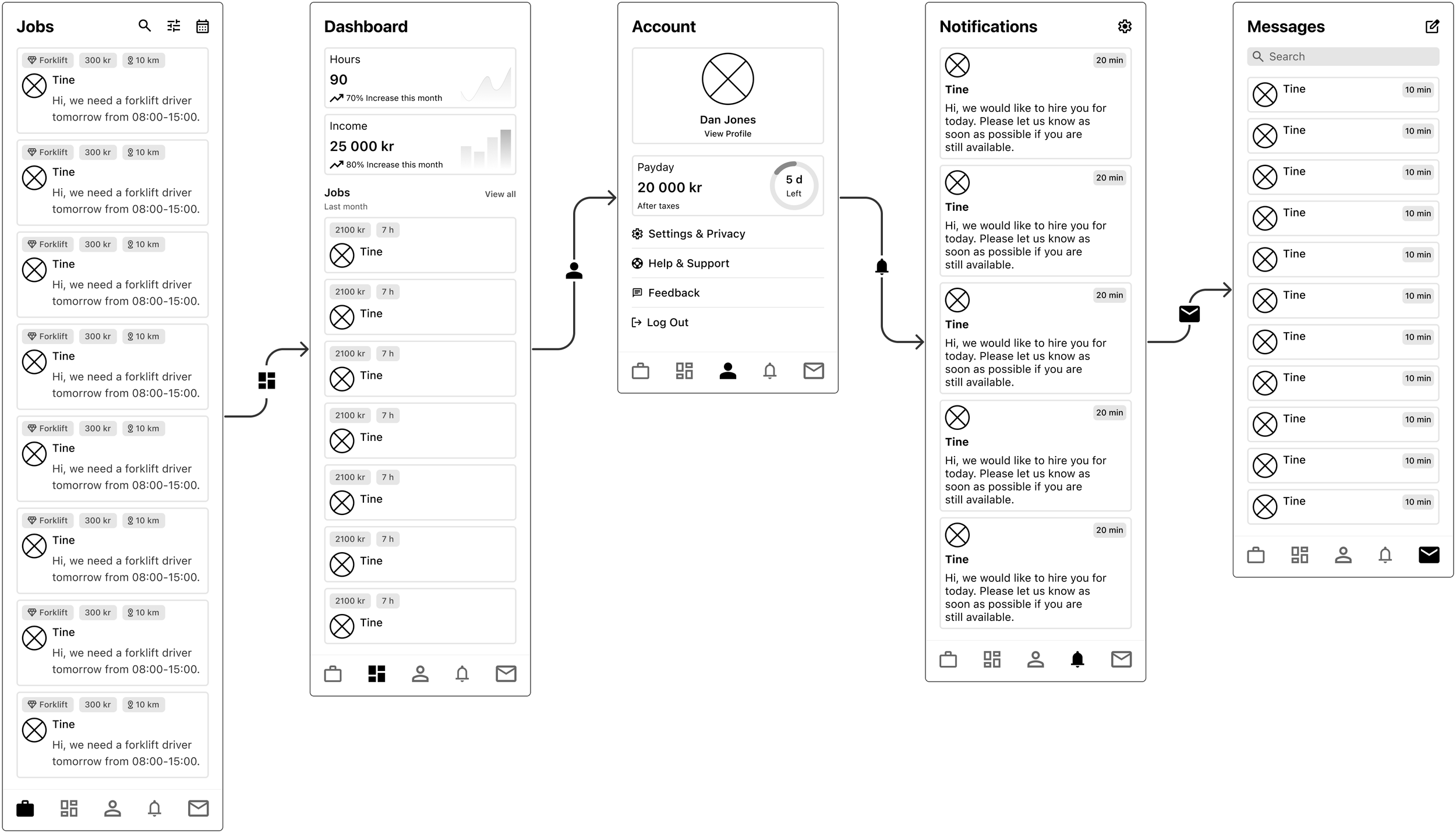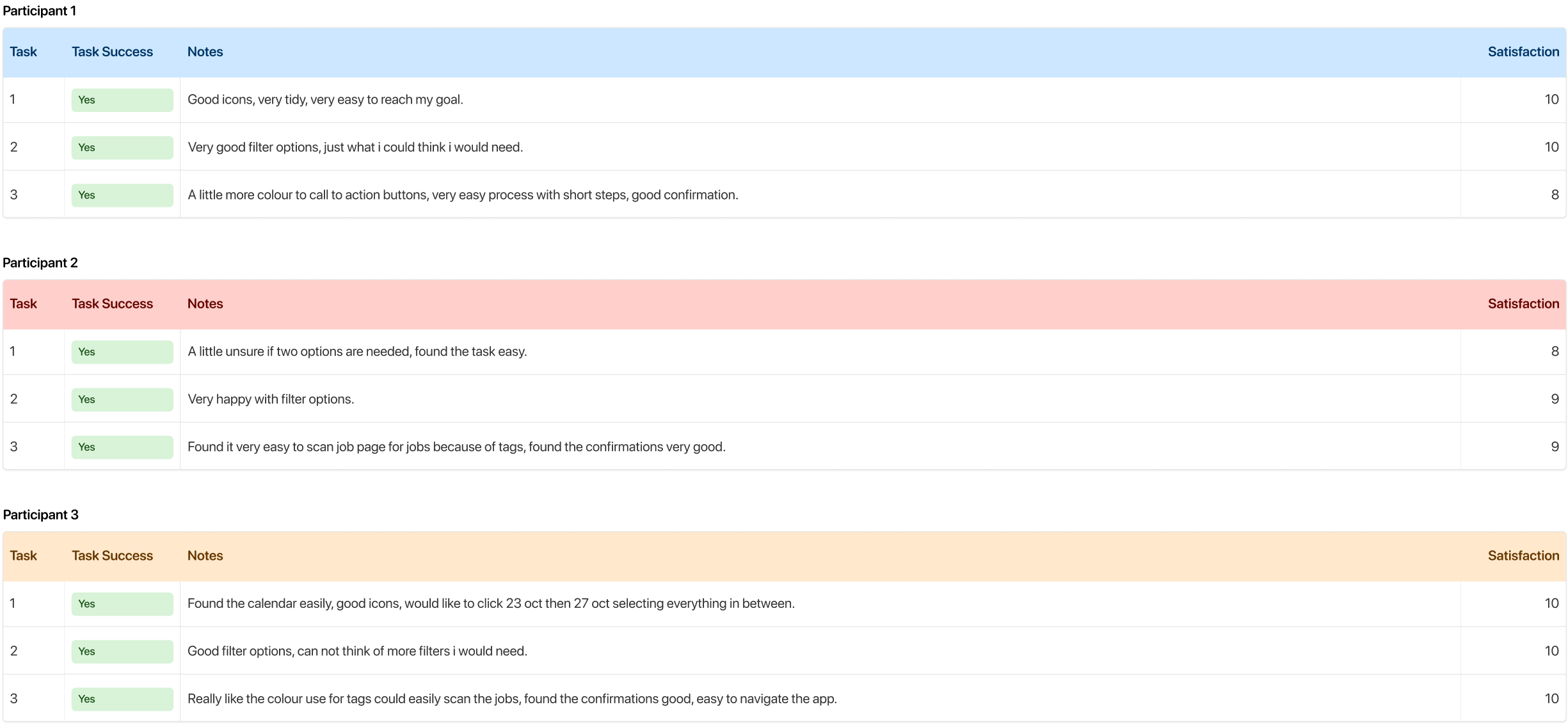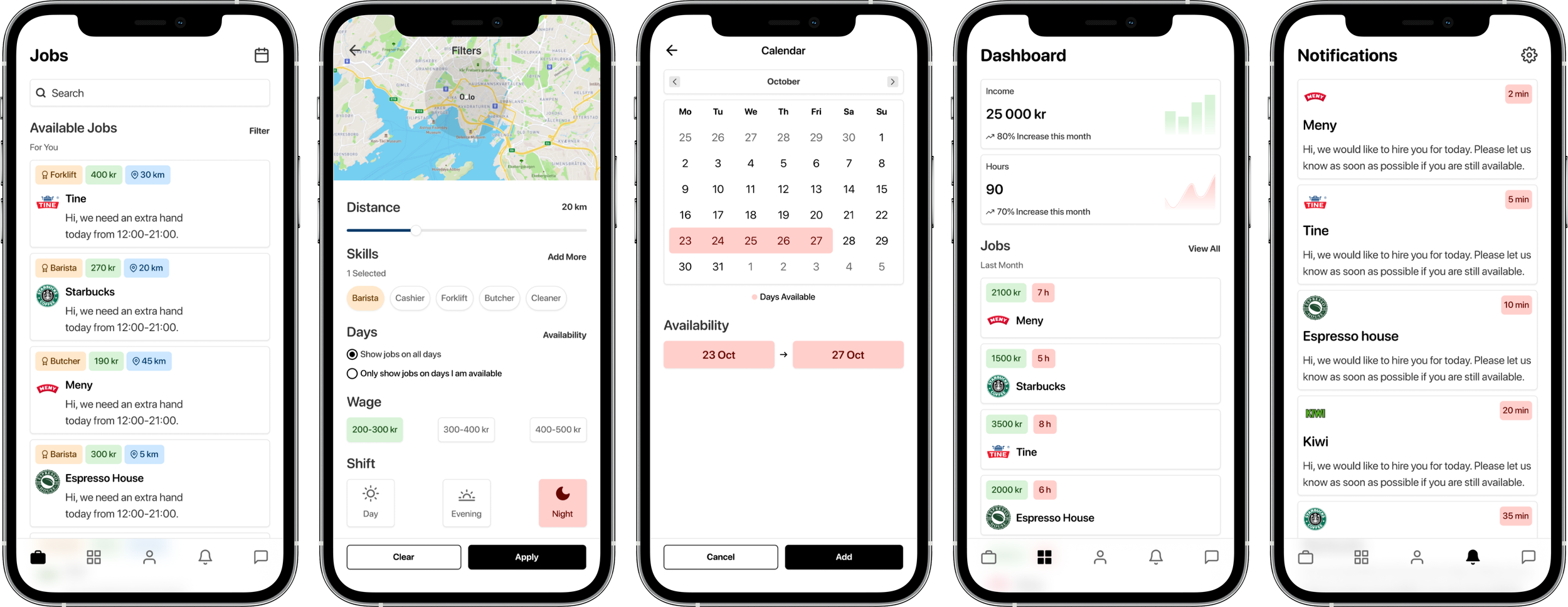Define
Defining the problem is no easy task, but through empathising with our users in the last stage, the problem was starting to take shape. Some of the methods used to define the problem were creating a persona and scenario, this in turn helped us write a problem statement defining the core problems students experienced with part-time work.
Problem Statement
Students looking for work that fits their changing schedule need an easier way to connect with employers on days they are free so they don't need to set studies aside to work on days they are not. This is because most students tend to have part time jobs that do not fit student life because shifts can be at the same time as classes, have no shifts when they are free or feel pressured to work because their boss keeps asking them.
If we can solve this problem we could positively impact students because we would give them back the control and balance they need to be good students and earn enough without it being a stressful experience. This would benefit our business because if we have a lot of students with changing schedules signed up, some of them would be free to work for shifts that are usually hard to fill.
